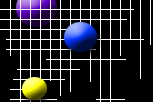Type 211-216.Kastenwagen
211:Panel van made from 1950-1967.
This version is the standard cargo van made from 1950.The earliest version had no rear window and very simple equipment.Heating was not available otherwise than from heating boxes mounted to the engine in rear end.The car had a standard engine which had been used since 1947 in beetles and was on 1131cc with a 25 hp output.
211 means standard panel van with left steering for Europe market.
212-213 a panel van with higher roof and greater cargo apartment.
214-216,explanations will arrive...
221-226:Kleinbus.
The version of buses made for person transports, avaliable from 1951-1967.These cars were available as 6,7 or 9-seater versions which had either separate seats or couches in the rear apartment.
The 221 is the standard version for Europe market and explained here.The bottom is like Kastenwagen but fitted with one or two cargo doors on each side and 3 side windows and 1 rear window.The bus couls also have a sunroof or -window.It´s therefore called 11 or 14 window bus due to total amounts of glasses.
The first versions had the 1131cc motor,but from mid-50´s a 1200cc was fitted,giving 30 hp,later 36 hp.From 1962 there was also a 1500cc developing 42hp.The kleinbus was in production all the years until 1967.
231:Kombi.
The Kombi-bus is actually a panel van with both cargo area and passenger compartment for 5 persons. This ran at first in 1951, and was in production until 1966.There are also panel vans which are converted later into kombis,but they´re not real ones.Not to take home-made buses for kombis.
Engines were the following;1131cc 25hp,1200cc 30,36hp,1500cc 42hp,later 46hp in the latest versions of 1966 and some sold 1967.
241:Sonderbus.
This is the most luxury version of Type 2 buses.First car ran 1951,then with 1131cc engine.The characteristics of this car is its large amount of windows,21 or 23 because it has sunroof and small windows around the roofline and a big rear glass bend over the corners.
Made in 7 or 9 seater versions,with or without wall between the drivers compartment and the passengers´.Also some walk-through models were made,very rare seen today.Some cars were also fitted with Westfalia camping accessories with beds for 2 to 4 persons.
The buses had one or two side doors on the passenger compartment due to which market they went to.They were in production until 1967.The last versions had 21 windows instead of the former 23.
251:Sonderbus, 7 seater
Special bus with left hand steering and walk-through apartment.
261:Pritschenwagen(261-264) Doppelkabine(265-268)
Single cab pick-up with two seats and open cargo apartment.See further instructions on Type 2 in Finnish Codes.
Double cab pick-up with extra seats for passengers.Up to 5 persons could travel at same time in this car.The first real double cab ran from line in 1956,and stayed in production until 1967.Before 1956,the carosserie company Binz made doublecabs by enlarging the compartment on a single cab version.This is also called Binz-doppel or Barndoor Double Cab.These were not made many,but some cars are still left.
The engines were the same as in panel vans.
271:Krankenwagen +
Ambulance made on demand from 1952 until mid 60´s.Equipments as doctor´s and nurse´s seats and stretchers so on...
Based on a kleinbus bottom.Oldest non-barndoor ambulance LG-27 in Finland.:)
281:Kleinbus with sunroof and special windows
Almost same as 221 type except some equipments.See further instructions on Finnish Codes...
29x:Prototyp
Prototype version of panel van,never used outside VW´s factory.No car seen on roads and therefore not much to write.Characteristics as a panel van 211.
Barndoor Bus:
From the production start in 1950 until march 1955 a big engine lid stretching from rear bumper up to rear window was used.This looks like a big barn door and was made due to the gasoline tank and spare tire ws fitted in the engine compartment and the need of space was great.
After 1955 a smaller lid was fitted.
Pick-ups and double cabs made prior to 1955 are also called barn-doors even though they don´t have the big lid.
Binz:
Binz converted single cab pick-ups into double cabs from 1953 to 1956.This is not the real VW Doppelkabine but should be mentioned Barndoor Binz before 1955 and after that Binz Doppelkabine.
Binz has also converted a lot of ambulances and vans by other car makers.

